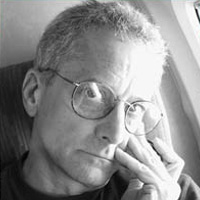


Member, Freestyle Advisory Board of Photographic Professionals
David Burnett was born on September 7, 1946, in Salt Lake City, Utah, USA. He launched his photographic career in 1967 as an intern at Time Magazine while still earning a degree in political science at Colorado College. He went to Vietnam as a freelance photographer in 1970. Time magazine regularly published his pictures. Following the death of photographer Larry Burrows in February, 1971, he became the last photographer hired by Life. The famed magazine ceased publication the following year. He then joined the French agency Gamma before co-founding Contact Press Images with Robert Pledge in New York in 1976.
His coverage of the aftermath of the 1973 Chilean Coup d'Etat earned him his first major award, the Overseas Press Club of America's prestigious "Robert Capa Gold Medal" for "outstanding photography demonstrating exceptional courage under difficult circumstances". Many prestigious awards would follow, including the 1979 World Press Photo "Premier Award" for his documentation of Cambodian refugees and the 1986 American Society of Magazine Photographers (ASMP) "Philippe Halsman Award" for his contribution to photojournalism over the last decade. His immortal picture of Mary Decker's anguished fall at the 1984 Los Angeles Summer Olympic Games has likewise earned numerous awards and graced many magazine covers.
In his career that has spanned nearly 40 years, David Burnett has visited more than seventy countries. He has covered stories as diverse as the French and American Presidential elections from 1972 to the present; the famine in Sahel in 1974 and in Ethiopia in 1984; the Iranian revolution following Ayatollah Khomeini's return to Tehran in 1979, and the Summer Olympics from 1984 through 2004.
During his career Burnett has photographed every U.S. president from John F. Kennedy to George W. Bush, including Lyndon Johnson, Richard Nixon Gerald Ford, Jimmy Carter, Ronald Reagan and George Bush. In March 1990, Time magazine chose him to shoot Soviet General Secretary Mikhail Gorbachev for their exclusive cover-story interview. He likewise accompanied Time senior editors to Cuba to produce a cover portrait of Fidel Castro for their Cuba feature. Recently he produced "The 10 Best Senators" for a Time essay. In addition to assignments that have taken him all over the USA and both Western and Eastern Europe, Burnett found time to revisit Vietnam twice, producing a very personal picture essay in black and white in 1994, and a color picture story published in Fortune magazine on the profound changes since the war. His black and white photo essay for Time on the occasion of the centennial of the Olympic Games in 1996 earned him the first prize in the International Olympic Committee's quadrennial contest in Lausanne, Switzerland. These images were published in magazines all over the world and later expanded into the exhibit and catalogue, E-Motion: Grace and Poetry: The Spirit of Sport. That same year he completed an eight-month project called "A Mile Around The White House" which he produced along with two other Contact photographers for Life.
David Burnett continues to be the photographer-of-choice for many magazines with his in-depth coverage of the Washington political scene, including the Monica Lewinsky episode and the attempt to impeach Bill Clinton, and the Washington as it copes with the post 9/11 world. His 52 image show "Measures of Time" originally exhibited at The Colorado College in 2002, has since been on exhibit at a dozen universities. He speaks frequently on the topic of photojournalism and information in the digital age.
Awards:
Books:
Television: